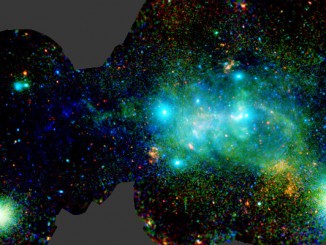
Sagittarius A*




Infant stars discovered surprisingly near galaxy’s supermassive black hole
At the centre of our galaxy, in the immediate vicinity of its supermassive black hole, is a region wracked by powerful tidal forces and bathed in intense ultraviolet light and X-ray radiation. These harsh conditions, astronomers surmise, do not favour star formation, especially low-mass stars like our Sun. Surprisingly, new observations suggest otherwise.

Hubble peers into the heart of the Milky Way
Peering deep into the heart of our home galaxy, the Milky Way, the Hubble Space Telescope reveals a rich tapestry of more than half a million stars. Most of the stars pictured in the image are members of the Milky Way nuclear star cluster, the densest and most massive star cluster in the galaxy. Hidden in the centre is the Milky Way’s resident supermassive black hole.

A supermassive and super-hungry galaxy
This NASA/ESA Hubble Space Telescope image shows the spiral galaxy NGC 4845, located over 65 million light-years away in the constellation of Virgo. In 2013 researchers noticed a violent flare from the black hole at the centre of NGC 4845 as it tore up and fed off an object many times more massive than Jupiter that strayed too close and was devoured.

The Milky Way’s tumultuous heart revealed in X-rays
A newly released image from the ESA’s XMM-Newton X-ray satellite observatory gives us a unprecedented look at the intense processes taking place at the centre of our Milky Way galaxy. The new study, which spans a thousand light-years, is a compilation of one and a half months of monitoring, revealing the powerful remnants of dead stars and their mighty action on the surrounding gas.


